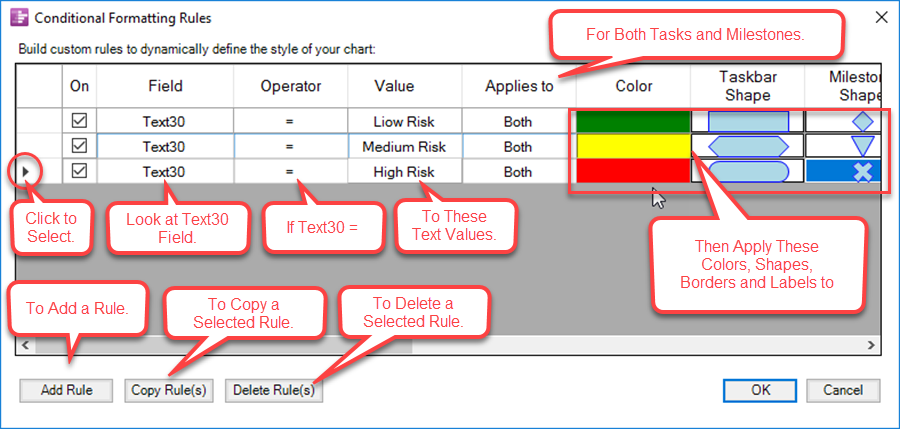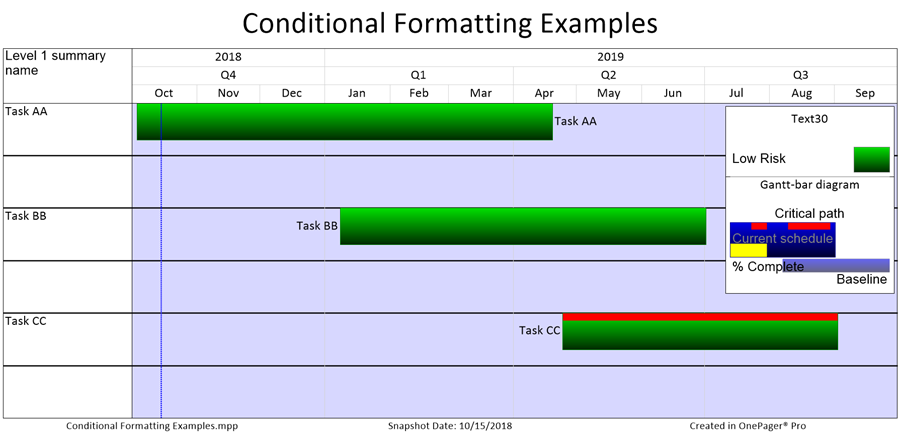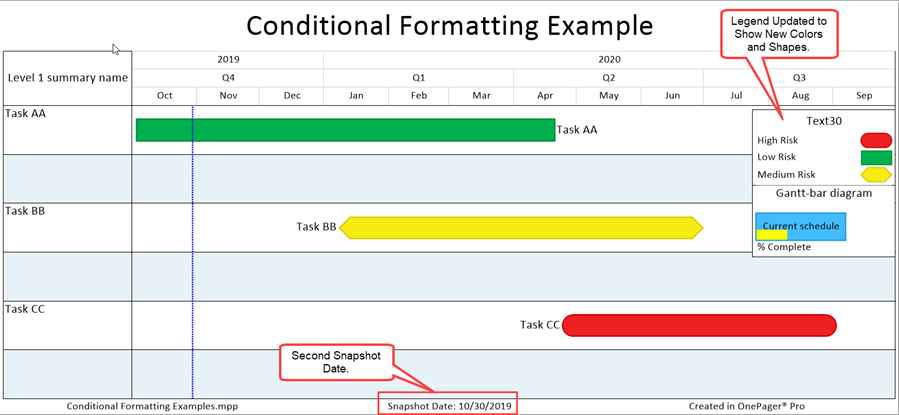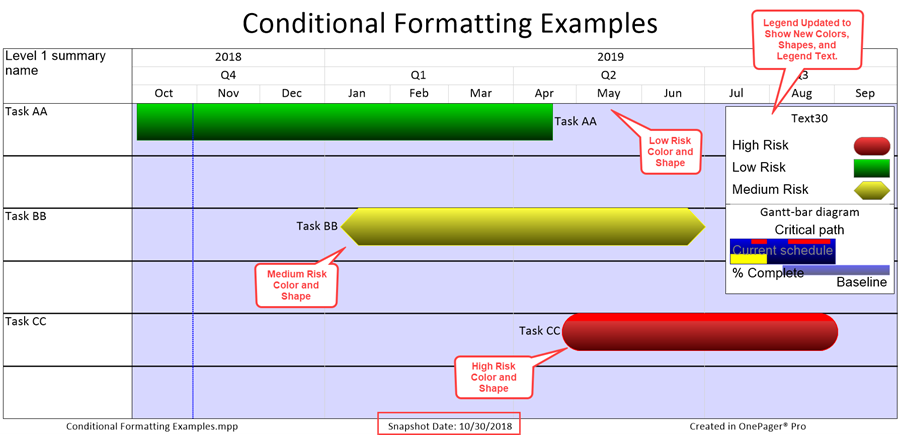Difference between revisions of "Conditional Formatting Overview for OnePager Pro for Version 7.0"
(→An Example of Conditional Formatting) |
(→An Example of Conditional Formatting) |
||
| Line 16: | Line 16: | ||
<center>[[File:P70-11_1_1-70-(1)-09222019.png]]</center> | <center>[[File:P70-11_1_1-70-(1)-09222019.png]]</center> | ||
| − | + | <center>P70-11_1_1-70-(1)-09222019.png</center> | |
<center>[[File:P61-11_1_1-61-(1)-10302017.png]]</center> | <center>[[File:P61-11_1_1-61-(1)-10302017.png]]</center> | ||
Revision as of 20:21, 22 September 2019
An Example of Conditional Formatting
1) As an example of conditional formatting, suppose that you have tasks that you want to show as green if the value in Text30 field in your Microsoft Project source plan contains the text Low Risk.
2) Further, you want tasks to show as yellow if Text30 for that task contains the text Medium Risk and you want the task to show as red if Text30 contains the text High Risk.
3) Above all, you want this to be represented in a series of snapshots automatically as you update the value of the task’s Text30 field in the Microsoft Project source plan only.
4) OnePager gives you the capability to add rules and apply them consistently from snapshot to snapshot as the source plan data changes.
5) Additionally, you can subsequently edit the rules as needed.
6) Finally, you have the ability to copy a rule or rules to make rule definition management easier.
7) Keeping it simple, let’s create a Microsoft Project source plan with Tasks AA, BB, and CC each with a Start and Finish date, each with a Flag field for OnePager import control, and a Text30 field for representing the risk assessment. That Microsoft Project source plan might look like this:


8) To set up the desired output and performance from OnePager, we need to enter our formatting conditions for these tasks into the Conditional Formatting Rules engine.
9) Access to the Conditional Formatting Rules engine prior to creation of a chart is through the Task Bars or Milestones tab of the Template Properties form.
10) Conditional Formatting Rules can also be added, edited, or deleted after the chart is created by using the Chart Properties form at the Task Bars or Milestones tab as is done in the example that follows.
11) When the Conditional Formatting Rules form is filled in as we’ve described it looks like this:

12) If we now create the chart, it looks like this for the first snapshot on 10/15/2018:

13) Since Tasks AA, BB, and CC have each of their Text30 data cells set to Low Risk, all tasks first snapshot are colored Green.
14) Now suppose we update our Microsoft Project source plan on 10/30/2018 to show Task AA remaining Low Risk but Task BB now becoming Medium Risk. So, we need to update Text30 fields accordingly. Further, let’s assume that now Task CC is now in a High Risk condition so we update its Text30 field. The Microsoft Project source plan would look like this for the status on 10/30/2018:


15) With this updated Microsoft Project source plan dated 10/30/2018 we can take a second snapshot that looks like this:


16) The update to the chart snapshot for 10/30/2018 was done automatically for you after you established the Conditional Formatting rules for this project. Your only requirement was to maintain the appropriate Text30 values in your Microsoft Project source plan.
Note
17) The above example illustrates the power of Conditional Formatting.
- a) Before starting, it should be pointed out that Conditional Formatting is done on a Global basis.
- b) As with other global editing features that are supported by OnePager, changes to Conditional Formatting rules have an impact on the chart and all snapshots previously created as well as snapshots created in the future.
- c) Accordingly, caution should be exercised should you want to preserve historical snapshots in their original form before changes are made to the Conditional Formatting rules.
(11.1.1-70)